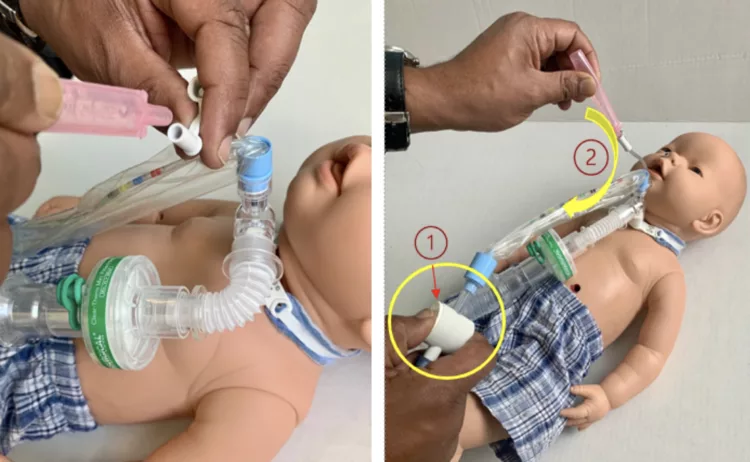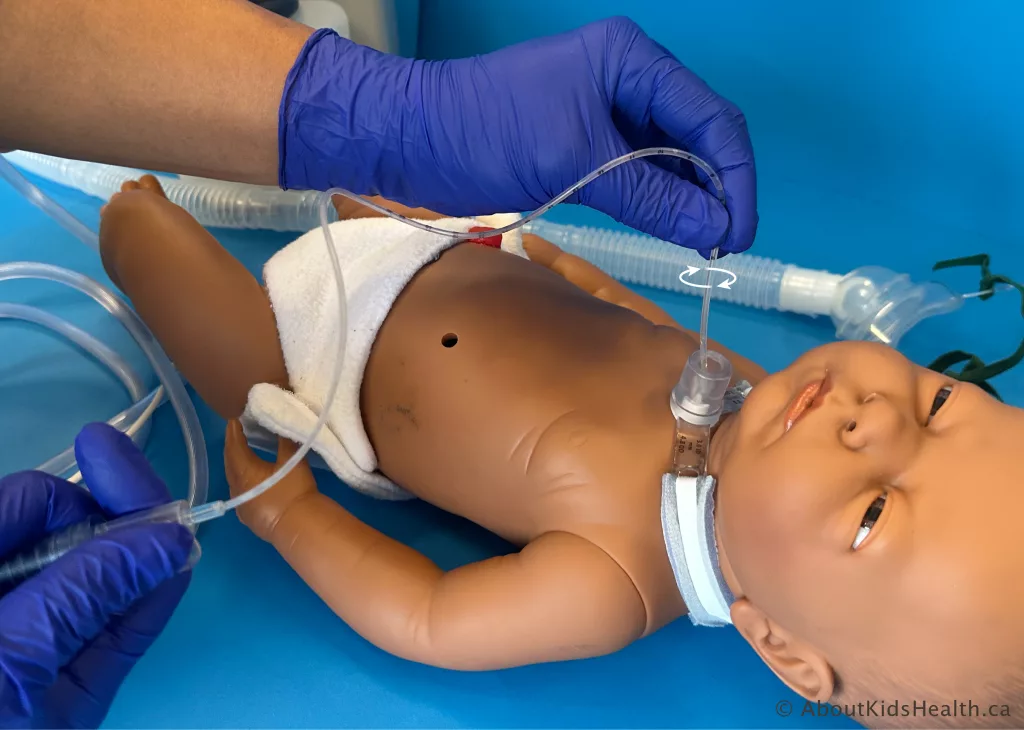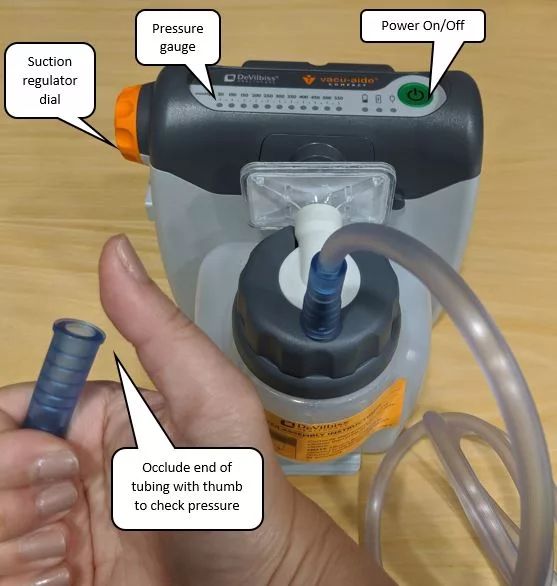SITUATION:
This Quick Hit was informed by a family caregiver who described that their home care nurse was unsure when and how to clean and maintain suction machines.
BACKGROUND:
A suction machine is a device used to help clear the airway of mucus. This machine is important to keep clean as the close proximity of dirt and bacteria to a child’s airway may increase the risk of a child becoming sick. Children with medical complexity may require oral, nasal, oropharyngeal, nasopharyngeal and/or tracheostomy suctioning as outlined in their care plan.
ASSESSMENT:
A suction machine usually consists of the following parts:
- Canister: The container where secretions suctioned from the airway collect.
- Tubing: Hollow plastic that connects that suction machine to the suction tip/catheter
- Suction Tip/Catheter: The device that is attached to the tubing and is inserted into the child’s airway to suction out secretions.

- Filter: Prevents bacteria and other potential pathogens in secretions from entering the suction machine
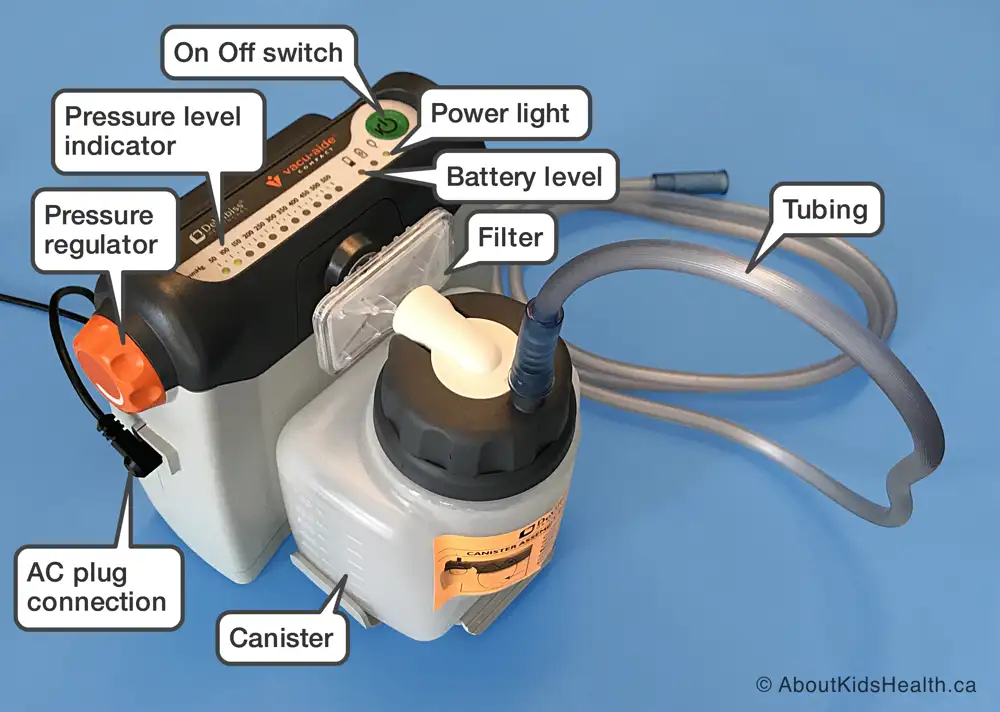
RECOMMENDATION:
Connected Care recommends the following to clean and maintain a suction machine and supplies:
- Check the suction machine every day to make sure:
- suction pressure is set correctly
- integrity is good (no holes, cracks, tears)
- filter, tubing & canister is clean
- battery is fully charged
- Follow the table below for how to clean, maintain, or replace suction machine components. Refer to the suction machine manual for other recommendations with your model of suction machine.
| Daily | Weekly | Monthly | |
|---|---|---|---|
| Suction Machine | Wipe outside surface with damp, soapy cloth, then wipe dry. | Check batteries – Need to be replaced after about 1 year or sooner. | |
| Suction Canister | Empty into toilet. Wash with soap & water. Leave a small amount of water in canister to prevent secretions from sticking. | Clean thoroughly at least once a week. | Change the canister as per the manual for your device. |
| Suction Catheters | One per suctioning session* | ||
| Suction Tips (e.g. Little Suckers, Yankauer) | For Oral and Nasal: Rinse after each use | For Oral and Nasal: Replace weekly | |
| For Trach: One per suctioning session** | |||
| Suction Tubing | Inspect | Replace weekly | |
| Suction Machine Filter | Inspect | Check monthly. Change filter when it looks dirty or at least once every two months. | |
| Water for Suctioning | Empty into separate cup/container. Discard water after each suctioning session. | ||
| Container for rinsing catheters | If disposable, replace daily. If reusable, clean daily. |
*A suction session is an instance where a child requires suctioning and may include multiple passes of the same catheter if required based on assessment. The standard of practice in hospital due to infection control policies is to discard suction catheters after each suctioning session; however, recognizing the home environment differs and financial considerations, many families choose to reuse suction catheters. In this scenario we suggest, at minimum, rinsing after each suction and only using them for one hour.
**Suction tips: Practice will vary from single session use to reusing it up to a week. If you are using a tip inside a tracheostomy tube, be aware that due to infection control guidelines, these should be discarded after each suction session.
- When reassembling the suction machine, ensure filter is placed in the correct direction by placing the clear side of the filter labeled “IN” directly into the cannister’s lid. This assembly prevents backflow into the suction unit.

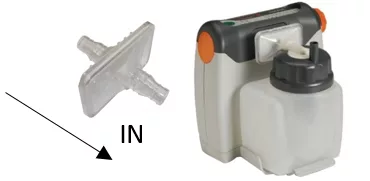
Additional Resources
To learn more about cleaning and maintaining suction machines and supplies, visit the following AboutKidsHealth articles:
When to clean and replace tracheostomy supplies
Cleaning tracheostomy tube supplies and maintaining the emergency tracheostomy equipment and supplies.


